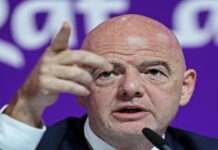Slimming down might be the trickiest part after two years of the pandemic.
As the Federal Reserve looks to shrink its near $9 trillion balance sheet to help cool U.S. inflation pegged at a 40-year high, the process might not be as straightforward as its two-year growth streak, according to Edward Al-Hussainy, a senior interest rates strategist at Columbia Threadneedle Investments.
“At the height of the pandemic, the Fed pumped billions of dollars into the financial system through asset purchases to support markets and the broader economy,” Al-Hussainy, wrote in a Tuesday client note.
Its monthly bond-buying program of Treasurys TMUBMUSD10Y, 1.841% and agency mortgage-backed securities MBB, -0.28% worked as expected, keeping financial markets awash in liquidity and asset prices low, as the central bank’s balance sheet mushroomed (see chart).
Now likely comes the harder part.
Fed Chair Powell has shifted focus to engineering a “soft landing” from full tilt support for the economy, with the first central bank interest rate hike since 2018 likely next week at its two-day policy meeting. Thereafter, the Fed plans to further withdraw its easy-money stance by shrinking its asset holdings, with an aim to bring inflation closer to its 2% annual target from 7.5% in January.
The path could be complicated by soaring oil and other commodity prices following Russia’s unprovoked invasion of Ukraine two weeks ago, resulting Tuesday in the Biden administration banning Russian oil, liquefied natural gas and coal imports.
Also, the above chart shows that investors and the Fed have yet to experience a period of significant balance sheet reduction.
As Al-Hussainy put it: “We have a good idea of how expanding the balance sheet works when the economy is in distress.” But our understanding “is less clear” when the Fed draws down its balance sheet, in part, because it generally would be happening in a growing economy. The pandemic also cut short its prior attempt.
He now sees three paths for the Fed to shrink its holdings, not all of which are expected to add to market turmoil:
Even so, Al-Hussainy tells investors to keep and eye on what the unwinding path signals in terms of future increases to the short-term fed-funds rate, “which would have the most direct impact on fixed-income assets.”
U.S. stocks SPX, -0.72% turned higher Tuesday, a day after the Dow Jones Industrial Average DJIA, -0.56% entered correction territory for the first time in two years, marking a drop of at least 10% from its peak. The Nasdaq Composite also fell into a bear-market, or at least a 20% drop from its recent record high.

















